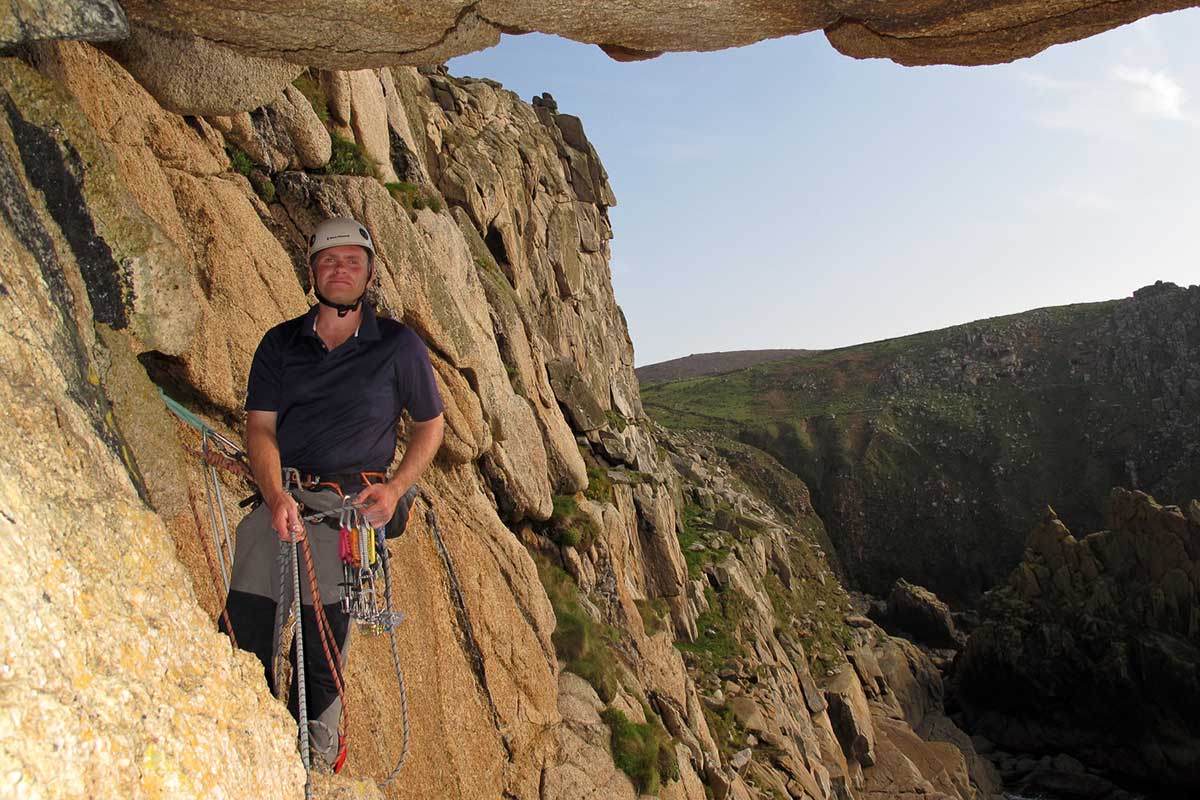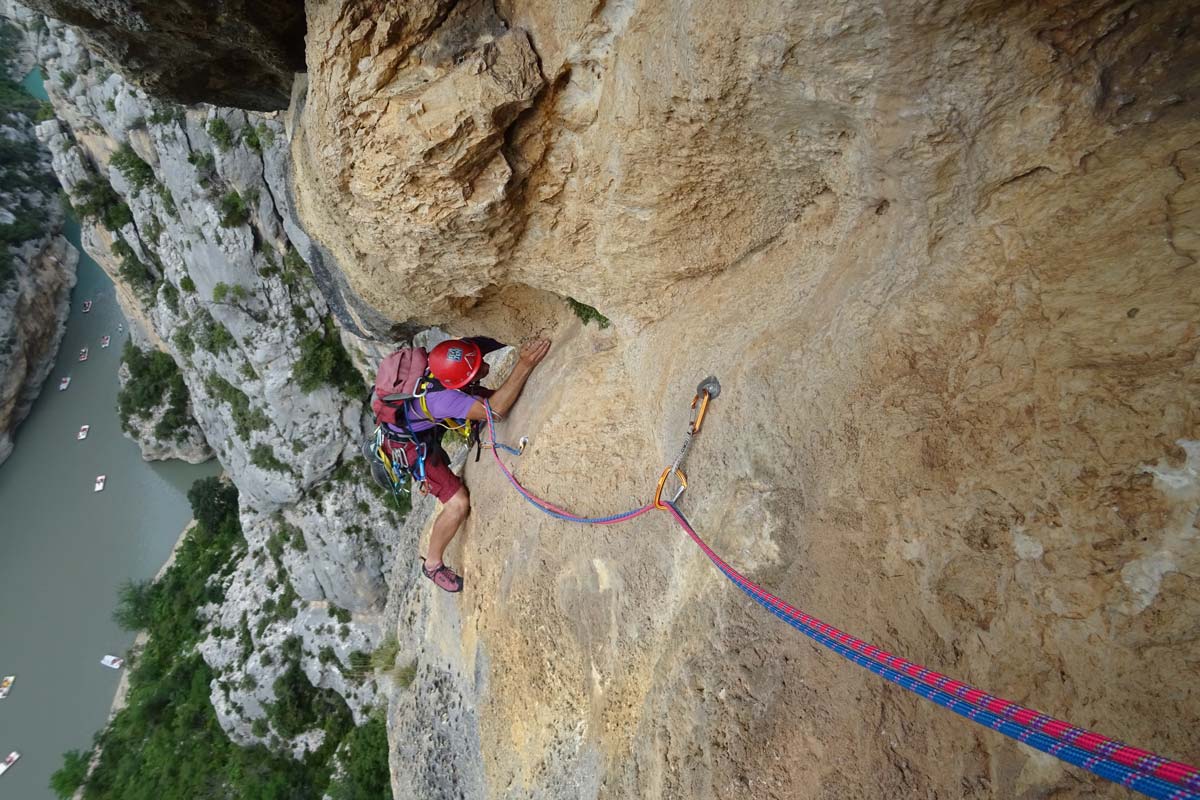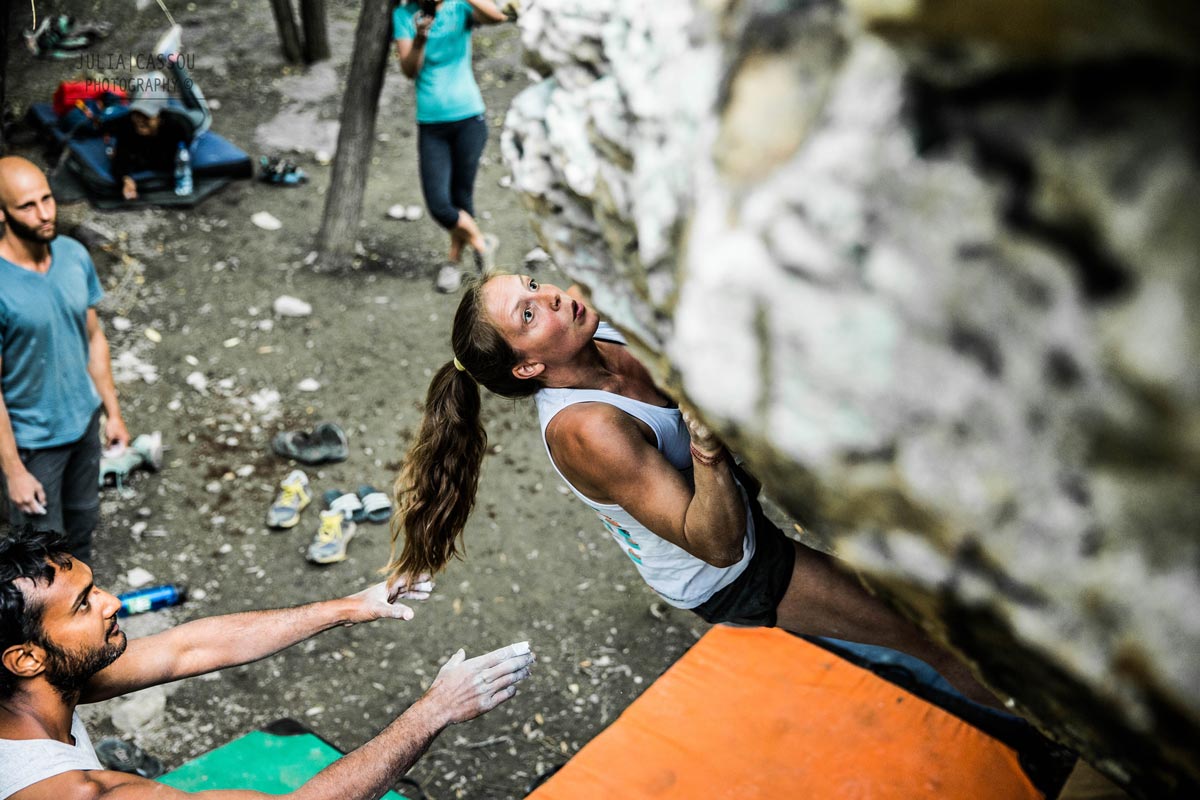Always protect your belay station with a redirect point in order to limit the consequences of a lead fall. Ideally this should be a high anchor that is separate to the belay station, however this is not always possible.
If the belay station is bomber, the lead climber can clip one of the anchor points as his redirect. There should always be a minimum of 1.5 meters between this redirect and the belayer’s hands, which may require the belayer to lengthen his tether/tie-in to drop lower on the anchor.
In case of a lead fall, the belayer’s hands must not get pulled into the redirect point. This is to avoid injury or possibly dropping the lead climber.

This article is an extract from the ‘Belay Station’ chapter of the UIAA Alpine Skills Summer handbook. The handbook is a compendium of the essential skills one must acquire in order to become a hiking, climbing or mountaineering leader. The purpose of the handbook is to present tried-and-true techniques that can be learned and mastered only through formal training. The entire guide is now available to purchase as a digital download. To purchase the guide please click here.
Previous extracts from the Guide can be found on our dedicated Skills page.
Main Photo: Belaying in Cornwall, UK/Phil Wickens
About the UIAA Alpine Skills Summer Guide
The UIAA Alpine Skills Summer guide was first published in 2015. Produced in collaboration with the Petzl Foundation, the guide and has been well received worldwide and is currently available in five languages. To mark the launch of a digital version of the publication, the UIAA is running a series of articles from the guide designed to help hikers, climbers and mountaineers develop their skills and knowledge of the mountain environment.
The guide was developed specifically as a reference document for trip leaders and instructors of club and federations within the UIAA – an aide memoire for climbers and mountaineers who attend training courses delivered by instructors and guides who have gained qualifications accredited by the UIAA. Now open to the wider climbing and mountaineering world, the handbook’s four modules focus primarily on summer activities. However, a specific winter guide is currently in production.
TRAINING & SKILLS PARTNER




